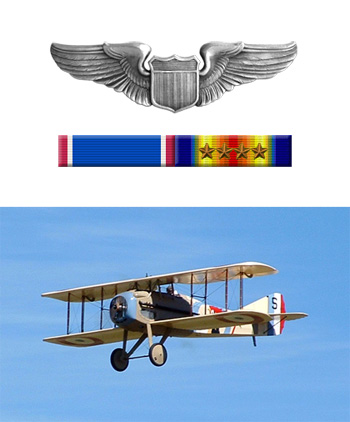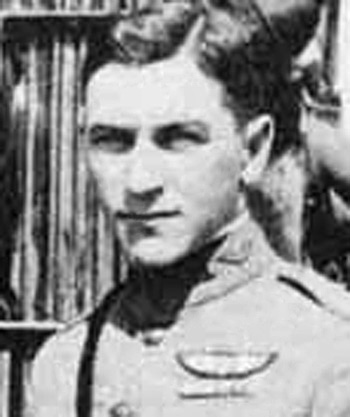
|
Arthur Raymond Brooks |
 |
|||
| Rank, Service | ||||
Captain O-3, U.S. Army Air Service |
||||
| Veteran of: | ||||
|
||||
| Tribute: | ||||
Ray Brooks was born on November 1, 1895, in Framingham, Massachusetts. After graduating from the Massachusetts Institute of Technology, he joined the Aviation Section of the U.S. Army Signal Corps in September 1917, and then attended the School of Military Aeronautics with the Royal Flying Corps in Canada until November 1917. Lt Brooks was assigned to the 139th Aero Squadron in Texas from November 1917 to February 1918, and then deployed with the unit to France in March 1918. He was credited with the destruction of 1 enemy aircraft in aerial combat before joining the 22nd Aero Squadron in August 1918. While flying with the 22nd Aero Squadron, he was credited with destroying another 5 enemy aircraft in the air, for a total of 6 during World War I. Capt Brooks returned to the U.S. in July 1919, and served as commander of the 1st Pursuit Group at Kelly Field, Texas, followed by service at the Air Service Field Officer's School at Langley Field, Virginia, before leaving active duty in December 1922. After leaving the service, he established Florida Airways Corporation, which later became Eastern Airlines. He was responsible for surveying the nation's first air routes and supervised the installation of radio beacons to aid airmail pilots along certain routes. Ray joined Bell Telephone Laboratories in 1928, where he supervised air operations and tested electronic aids for air navigation and communications, including development of air-to-ground communications systems. He retired as Bell Labs' Chief Pilot in 1960. Ray Brooks was the last living American World War I fighter ace at the time of his death on July 17, 1991. He is buried in a family plot in North Framingham, Massachusetts. |
||||
|
||||

